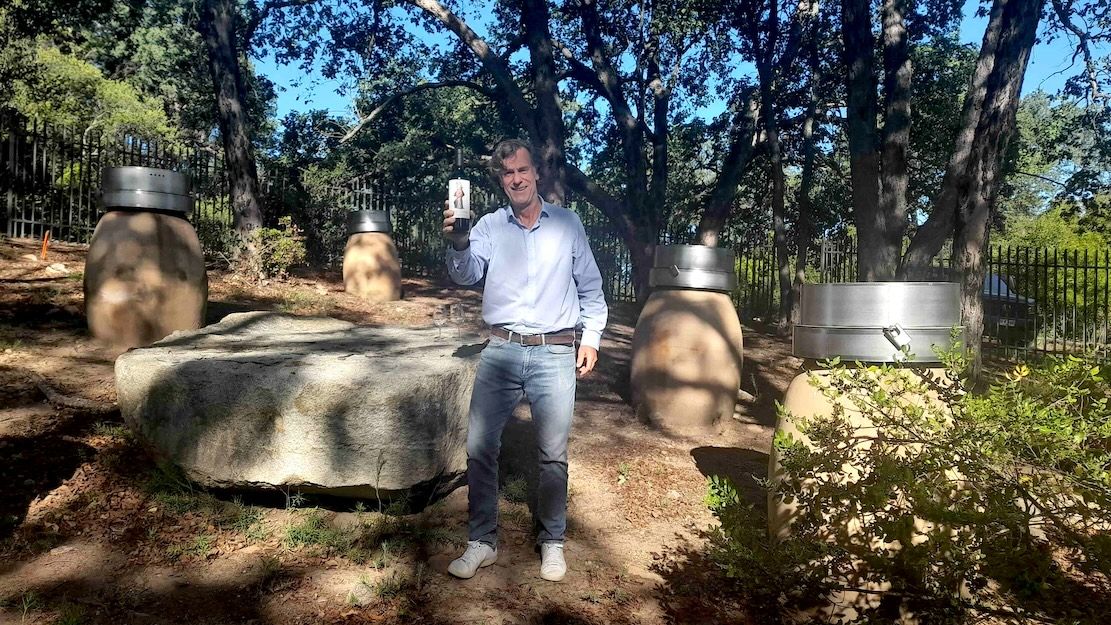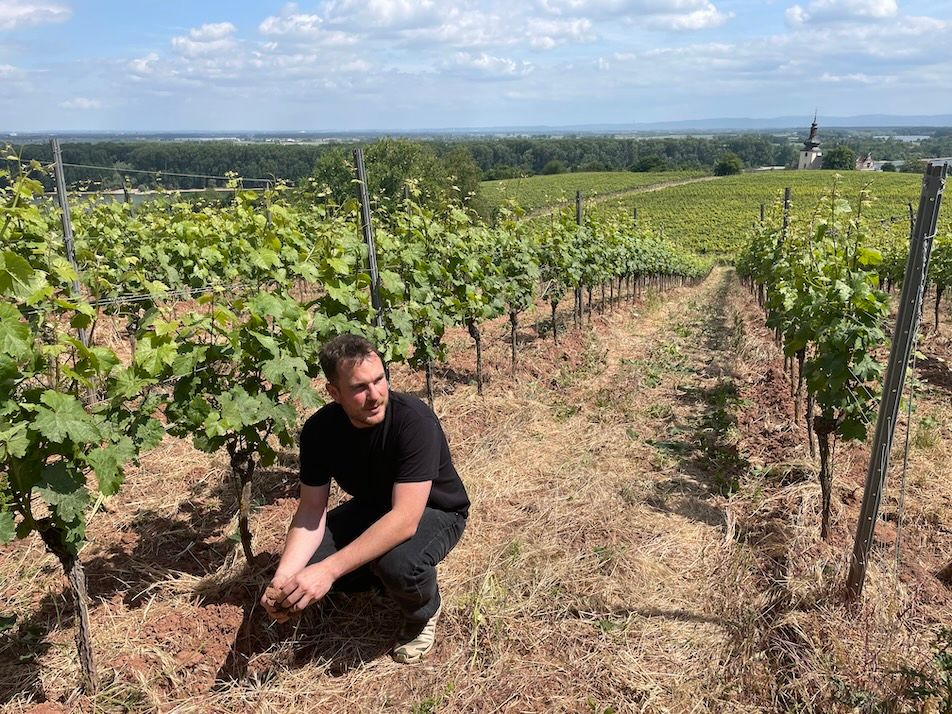This is the latest article from The Buyer’s comprehensive Stellenbosch Business Report produced by Richard Siddle in partnership with Stellenbosch Wine Routes. You can download the full report here.
It is a reflection of how far South Africa has come in the last 10 years as a wine producing country that Pinotage is now seen as one of its flagship, innovative, agenda-setting varietals and not one to be hidden away, like a misunderstood black sheep member of the family.
But then for the best Pinotage producers, many of whom are the bedrock of the Stellenbosch winemaking community, it has always been the main show in town. The style of wine they are most proud of and best reflects the terroir and micro climates of the region.
Like Beyers Truter, dubbed the ‘Pinotage King’, for the influence he has had on whole Pinotage winemaking scene and not just the wines he has made at Beyerskloof since the late 1980s.

Beyers and Arni Truter – the father and son team now behind the highly influential Beyerskloof winery that has done so much to help raise the quality and reputation of Stellenbosch Pinotage
He is quite happy to reflect on Pinotagte’s ups and downs and turn the focus on what he sees are now the styles of wine that are really in tune with what people want to drink, and have the quality, the fruit, and the flavour profile that both best express what Pinotage can do as a grape variety, but also deliver a drinkable wine that people want to buy another glass and bottle of.
Wine consultant and academic, Jonathan Steyn, says Pinotage is entwined with winemaking in Stellenbosch and where it first made its name – dating back to the 1950s. “Pinotage is central to Stellenbosch’s success and vice versa. It is really part of its history,” he says. For some consumers it is the style of wine they are prepared to pay the most for. “But there is so much unlocked potential in Pinotage,” he adds.
Best expressions
In order to best express Pinotage in Stellenbosch, Beyerskloof has looked to buy vineyards in different regions, like the 100 hectares it has in the Bottelary Hills, the 85ha in Devon Valley, the 40ha in Cricket Hill close to Simonsberg Mountain. Together they offer grapes grown on a variety of soils and terroir, all of which help bring new textures and complexity to its wines.
Its Diesel Pinotage, for example, is a “showcase” of all the best Pinotage parcels it has, says Truter. He goes through a barrel selection to pick out the top 15 to use in the final blend. Truter is quite happy asking other winemakers, including Abrie Beeslaar at Kanonkop, where Truter first started out, to come and taste and cast their votes too.
“We want to show Pinotoge in its top form – what it can do best,” he says.
The result is a soft, elegant wine with a long taste profile and good balance of oak and fruit, he adds. A wine that can drink well for a good 10 to 15 years.
“We want to have that balance between complexity, tannin and structure,” says Beyers’ son Arni Truter, who now heads up the winemaking on the farm. “We do not want to make overpowering wines. We want that elegance and structure that you don’t see elsewhere in Stellenbosch,” he claims.
“That is where the big difference has been”, adds Beyers Truter. “The more knowledge winemakers have about the influences the soil, rocks and climate are having on the grapes, the better wines they are able to make”.
Steyn agrees: “There is incredible soil complexity and flavours based on where the sites are. The soils leave such an imprint on the wines when it comes to Pinotage.”
Kanonkop’s role
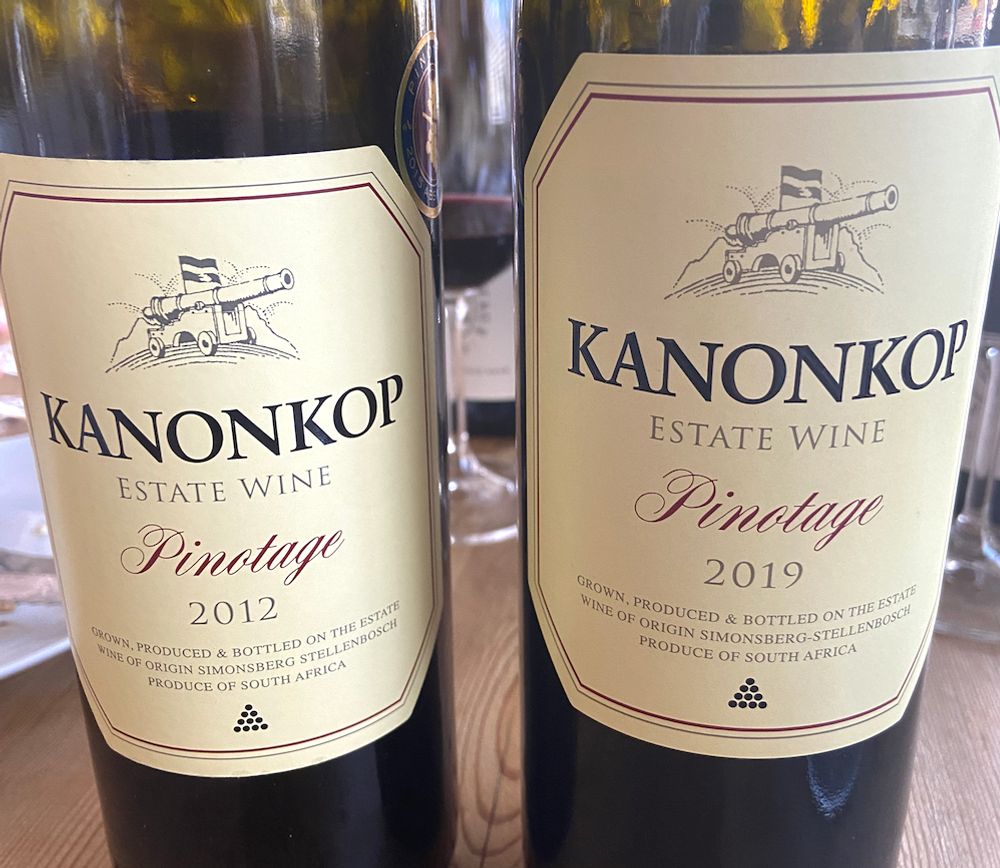
Kanonkop and winemaker Abrie Beeslaar are setting new standards and benchmarks for Pinotage producers to follow in Stellenbosch and South Africa
The role of Kanonkop in helping to put Pinotage on the map cannot be underestimated. It now has 40 hectares planted with Pinotage on its farm, some of which are 40 to 60 years old bush vines.
Beeslaar is only the third winemaker the property has had in over 50 years of winemaking and is keen to keep on experimenting and trying new ways to finesse and make even better wines, with a big emphasis on open concrete fermenters, whole bunches, manual punch downs and 18 months of French new oak – which he believes can make “all the difference”.
Kanonkop’s Heidi Kritzinger says the Kanonkop style has not changed that much from the 1990s and it has been more a case of handling vintage variation and using better technology where it can, particularly the optical sorting machines and cooling systems, doing more manual punch downs, she says
The Kaapzicht estate has been another pivotal, pioneering, Pinotage producer in Stellenbosch, with Danie Steytler now taking over as winemaker from his father, Danie senior.
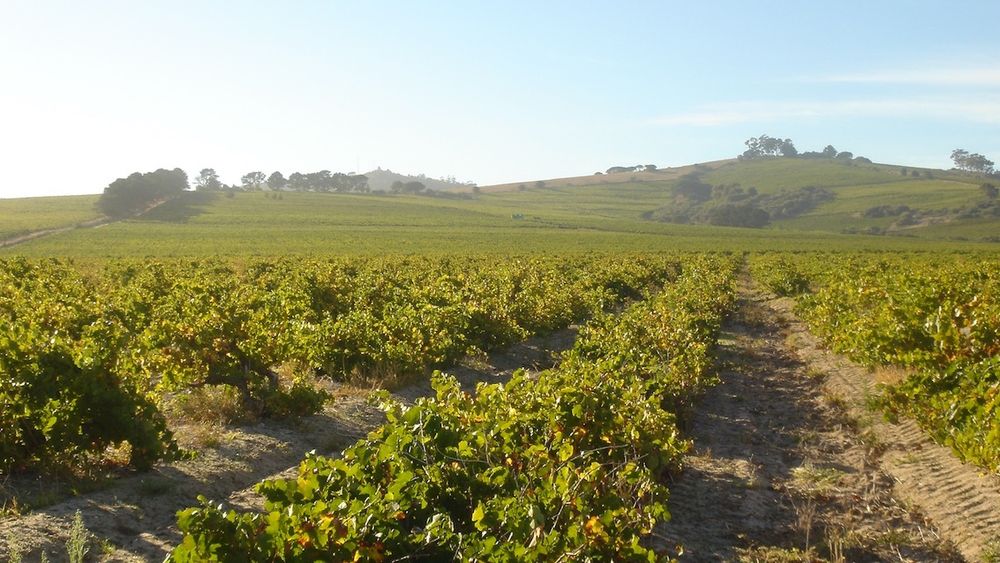
Bush vines on the Kaapzicht estate
“They have been pioneers in helping to rebuild the reputation of Pinotage,” says sales director, Angela Jordaan.
Pinotage has benefited enormously from winemakers adopting different methods both in the vineyards and in the cellar. Kaapzicht, for example, is one of a number of producers that now harvest slightly earlier in order to get lower alcohol levels and will use part whole berry fermentation to get “that burst of fruit on the palate,” says Steytler.
Using bigger formats to age the wines – up to 800 litre barrels– also helps make a lighter, more approachable and every day drinking style, she says. “There are lots of different styes of Pinotage now,” he adds.
It is a similar story at Simonsig, says Lize-Marie Gradwell, international sales manager. “We want to make wines with real vineyard expression and fruit intensity, with a responsible use of oak, using second and third fills for nine months in order to create wine with lovely ripeness, vibrance and balanced acidity.”
Working together
Key to how Pinotage has developed in Stellenbosch and South Africa has been the role of the Pinotage Association that was formed in 1995. It has now grown to around 170 members.
“We had to stand together on Pinotage. We knew we had a price and quality issue,” says Beyers Truter, who is the current chairman. “A lot of positives have come out of the association. It has allowed us to disseminate our knowledge between our members and market our wines better.”
Steyn believes it has also given producers a vote of confidence in the quality of wines they are producing by the fact there is an association set up to promote them.
“The association has also always been positive, even with there have been negative reports in the press. It has had a poker face and just looked to go forward, and concentrate on the quality of Pinotage that was being produced,” he adds. “It is, after all, our heritage.”

The 2022 selection of best Pinotage in South Africa
Each year, for example, it runs the ABSA Top 10 Pinotage competition to promote and reward the best performing producers. A chance also to highlight the different styles being made to the highest possible standard.
Truter says in its first year it only had 35 entries and the panel struggled to find a Top 10. Now it has over 150 wines entered, 35 of which scored 90 points or more. Wines that quite rightly are now demanding high prices of a few thousand rand a bottle.
“It has helped take Pinotage to another level,” he says.
Setting standards
It has also helped single out the producers, the winemakers and their wines that are truly setting the standard for others to follow. Standards that also work commercially and allow those producers to charge more for their high scoring wines.
He is proud to say that out of the new South African Wine & Cellar Classifications that have been set for South African wine since 2018, five out of the top six that meet all the quality and performance criteria are in Stellenbosch.
Then there is the Grand Pinotage classification that has brought six producers together to showcase the best of the best they have in cases of wines that retail for SAR9000. The six include Kanonkop, Beyerskloof, Kaapzicht, L’Avenir, Simonsig, and Rijk’s.
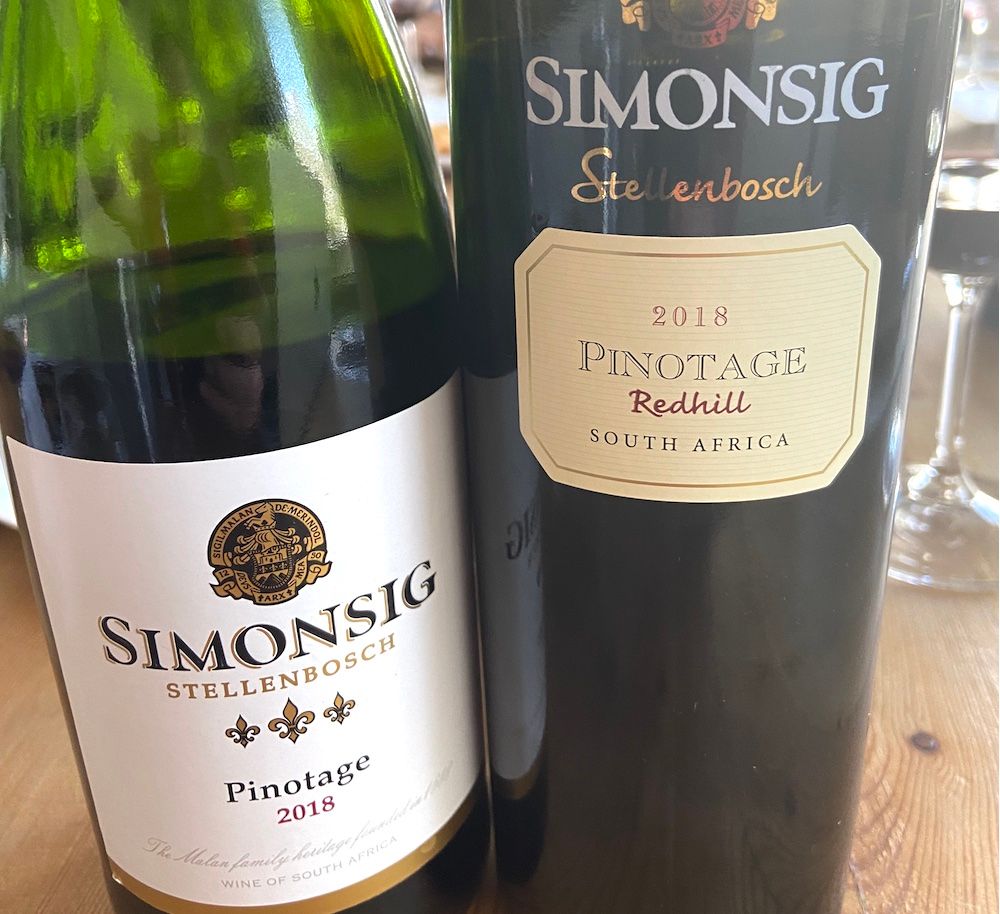
Simonsig is part of the new Grand Pinotage classification
All of which helps the overall image, profile, reputation and commercial power of Pinotage, says Steyn. He believes there is a great opportunity for aged Pinotages, going back 20 to 30 years, on the secondary market. “I have had Riojas and Burgundies of the same age and they don’t hold a candle to what Pinotage can do. They age incredibly well and there is a big investment opportunity there.”
Kanonkop, for example, is looking to keep more wine back to see how they progress, “both for educational reasons and to have some vinoteque stock to sell at the cellar door,” says Heidi Kritzinger
Belinda Jacobs, who heads up marketing for the Pinotage Association, says it is working hard to see how it can promote the winning wines, with special limited edition cases and initiatives that bring the producers and winemakers together. “We want to develop Brand Pinotage as well as the economic side,” she adds.
Beyers Truter agrees there is still lots of potential around the world for premium Pinotage. Currently around 75% of what Beyerskloof makes is sold locally and he would like to see exports pushed up to around 40%.
New generation
Truter is also quick to praise the influence the new generation of younger winemakers have had on the quality and reputation of Pinotage.
“One of the biggest things that has happened is how invested these younger winemakers are when it comes to terroir. They are now able to express regionality like never before and are really focused on producing top quality wines,” he explains. “They are also picking the best spots to plant Pinotage and experiment with viti and vitucultural processes to produce and bottle the best. Pinotage will only remain exciting based on who is involved in making it.”
Steytler agrees: “The younger winemakers are in touch with the land, the terroir and the making Pinotage that they feel best reflects them. It is very much the same with Chenin. We have built up our name as a Chenin producer and are now paying so much more attention to Pinotage, by respecting the old traditions and trying new expressions. It’s a great time for people to get involved with Pinotage.”
Steyn adds: “These winemakers have grown up in the new South Africa and they want to embrace it. Pinotage is emblematic of our country and the region of Stellenbosch. It appeals to their sense of where they are from. It’s exciting for them. They want to talk about it. As a variety it is also just at the beginning of its own journey. If you taste the current Top 10 Pinotages, there are so many differences in the wines. There is not just one style of Pinotage.”


